
Tired of your plants getting blown away? A windy garden can feel tough, but it’s possible to grow strong, happy plants.
Choose tough plants like grasses, shrubs, and trees that stand up to the breeze. Add windbreaks like fences or hedges to calm the air and protect your garden.
Need ideas to make your garden thrive? Learn how to pick the right plants and use smart tricks.
From special watering methods to clever layouts, these tips help your garden grow bigger and better. Discover how to turn wind into a friend, not a foe.
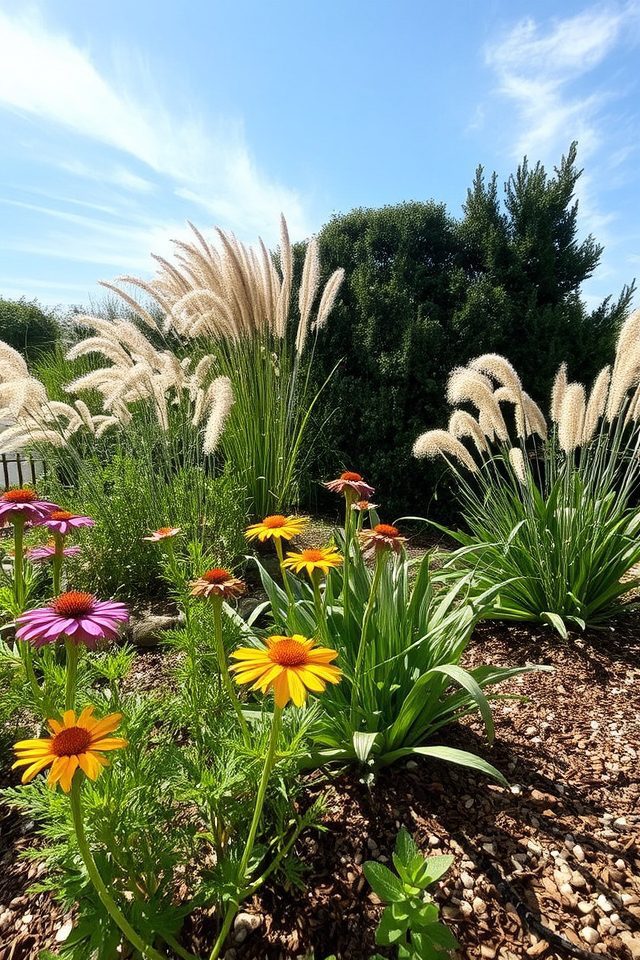
When gardening in windy areas, selecting sturdy, wind-resistant plants is crucial. Opt for species with thicker stems, well-developed root systems, and smaller, more compact growth habits to withstand strong gusts. Native plants often adapt better to local conditions, providing both durability and a lower maintenance option. Consider perennials, certain shrubs, and ornamental grasses that can handle wind exposure while adding beauty to your outdoor space. This thoughtful approach will help guarantee your garden thrives despite challenging weather conditions.
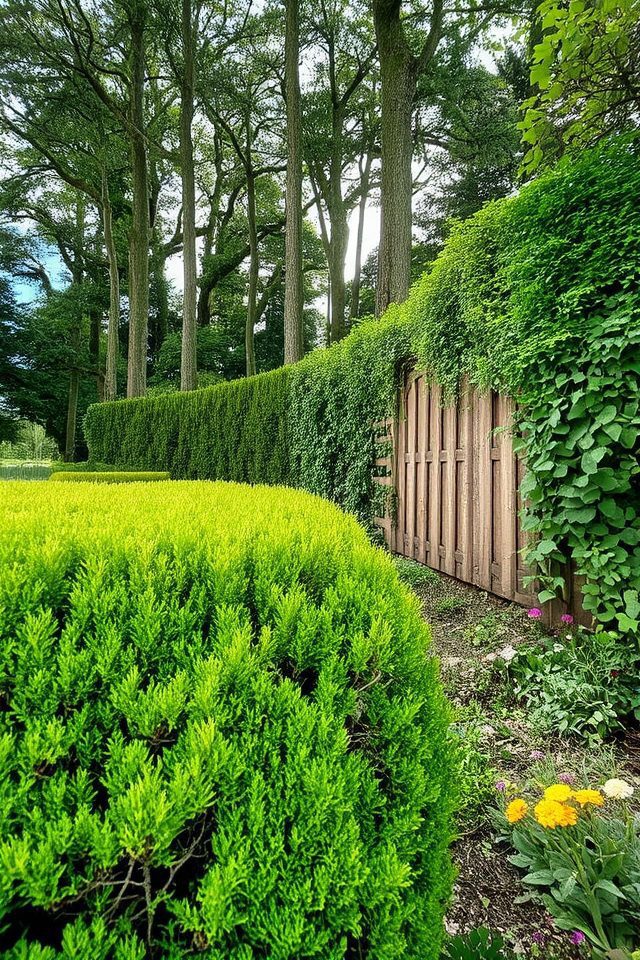
Building protective windbreaks is essential for creating a serene garden in windy areas. Utilize natural materials like hedges, shrubs, or trees to create barriers that reduce wind speed and protect delicate plants. Select species with dense foliage to maximize wind resistance, and consider arranging them in staggered rows for added effectiveness. Alternatively, you can use wooden or decorative fences, trellises, or even garden structures like pergolas to shield your plants while enhancing the landscape’s aesthetic.
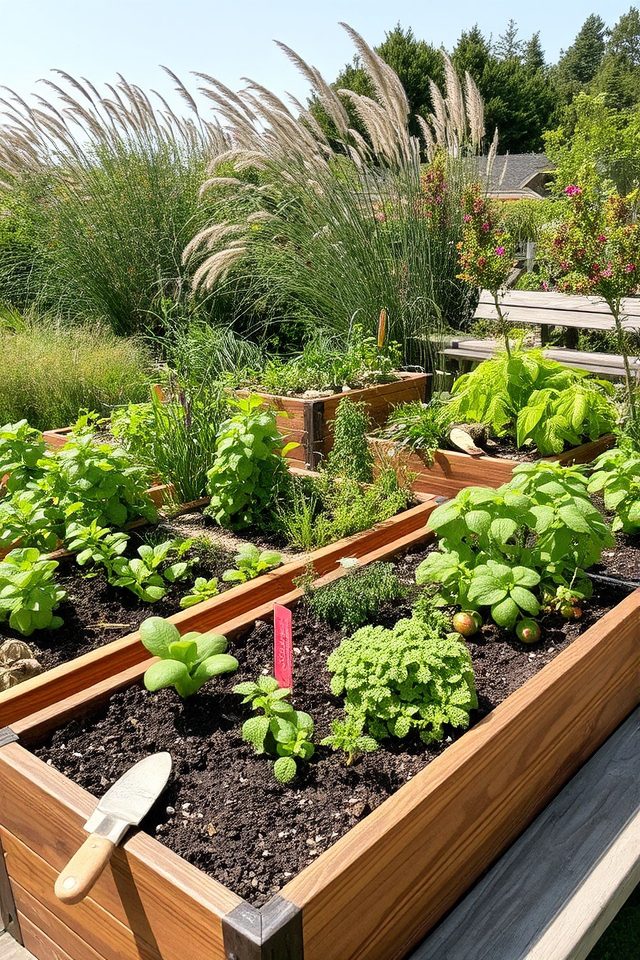
Raised beds are an excellent solution for gardening in windy areas, as they provide better drainage and protect plants from harsh winds. The elevated height allows for improved soil aeration and moisture retention, which is essential in areas where wind can dry out the soil quickly. Additionally, raised beds can be constructed with sturdy materials that act as windbreaks, shielding delicate plants and creating a microclimate that promotes healthy growth.
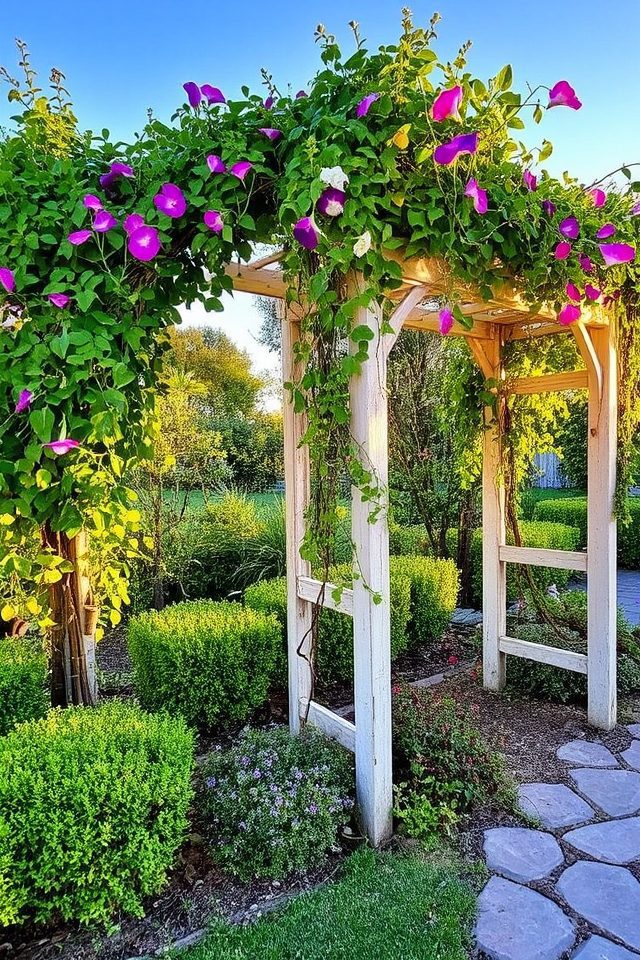
Trellises and arbors can serve as both functional and aesthetic elements in windy gardens. They provide essential support for climbing plants while creating windbreaks that can help shield more delicate flowers and shrubs from strong gusts. The vertical structure not only adds height and dimension to your garden but also enhances air circulation. Opt for sturdy materials like galvanized steel or treated wood to guarantee longevity against the elements, while selecting plants that can handle wind to ensure a thriving garden space.

When gardening in windy areas, low-growing groundcovers are an excellent choice. These plants stay close to the ground, which helps reduce wind exposure and minimizes damage. They spread out to form a dense mat, providing stability to the soil and preventing erosion. Additionally, many groundcovers are hardy and drought-resistant, making them ideal for challenging conditions. Options include creeping thyme, sedum, or low-growing sedge, all of which can thrive in blustery environments while adding visual interest to your garden.

When gardening in windy areas, consider planting in curved layouts. Unlike straight rows, curves can help deflect the wind, creating little pockets of shelter that protect delicate plants. This natural windbreak allows for better moisture retention and reduces the risk of plant damage. Additionally, curved designs can enhance the aesthetic appeal of your garden, offering a more organic feel. By strategically arranging plants in flowing lines, you can create a resilient and beautiful landscape.

Creating a layered garden design is an effective way to minimize the impact of wind in your outdoor space. By arranging plants in varying heights, you can create a natural windbreak that offers shelter to more delicate species. Start with taller, sturdier plants or shrubs at the back, gradually shifting to shorter blooms and ground cover in the front. This staggered arrangement not only enhances visual interest but also protects your garden from strong gusts, encouraging healthy growth and vibrant blooms.
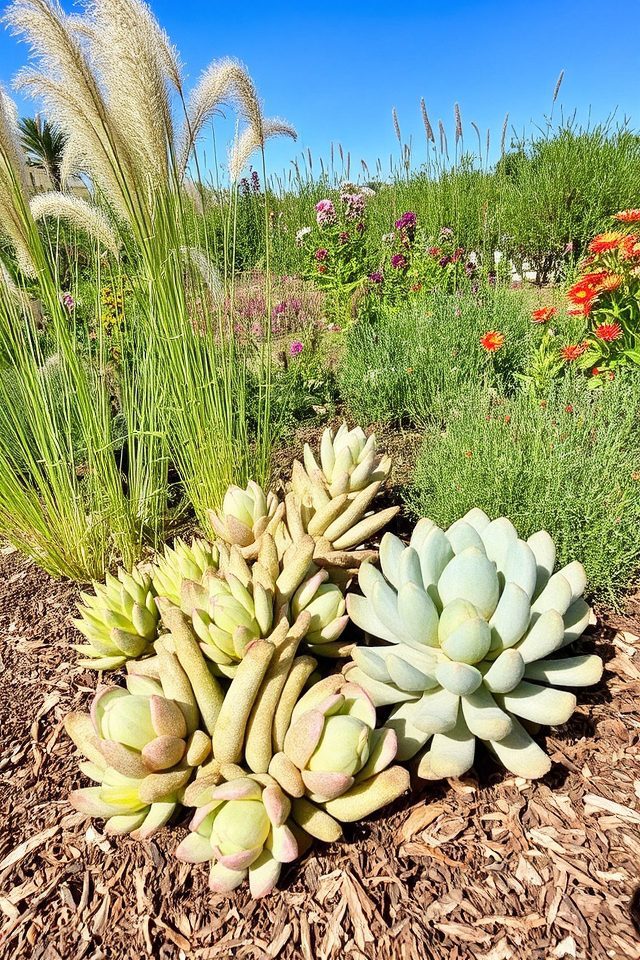
When planning a garden in windy areas, selecting drought-resistant varieties is essential to guarantee sustainability and resilience. These plants are better adapted to survive harsh conditions, requiring less water while withstanding strong winds. Consider native species and hardy perennials, such as succulents, ornamental grasses, and certain shrubs. They not only thrive in less-than-ideal conditions but also help stabilize the soil, reducing erosion and creating a more robust garden environment.
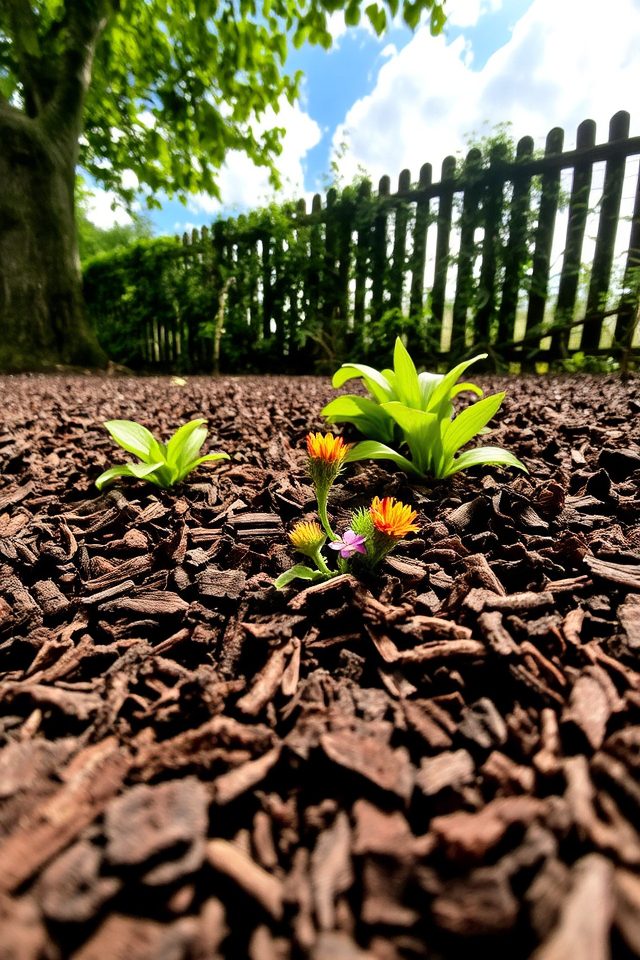
Mulch is an essential element for gardens in windy areas, as it helps retain moisture in the soil by reducing evaporation. A layer of mulch can act as a barrier against the elements, protecting roots from drying out in harsh conditions. Additionally, organic mulches improve soil structure and fertility over time, while suppressing weeds that might compete for water. Choose heavy or dense mulches, such as wood chips or straw, to guarantee they stay in place during strong winds.
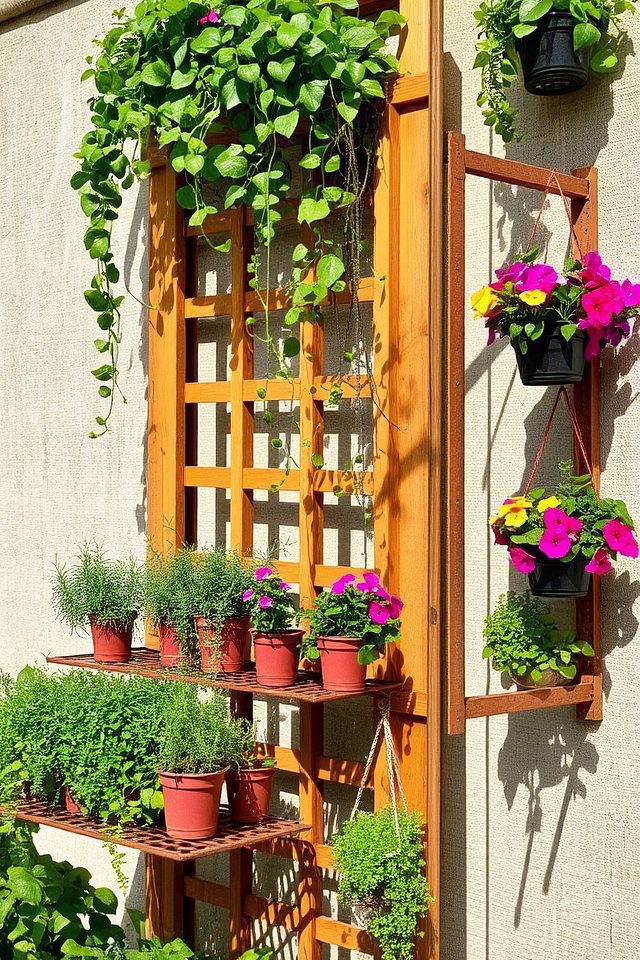
Utilizing vertical gardening techniques is an effective way to combat the challenges posed by windy areas. By growing plants upwards, you not only save on ground space but also minimize exposure to strong winds that can damage delicate plants. Use trellises, wall-mounted planters, or hanging pots to create a layered garden that provides stability and shelter. Additionally, incorporating sturdy plants and using windbreaks can enhance the success of your vertical garden in breezy conditions.
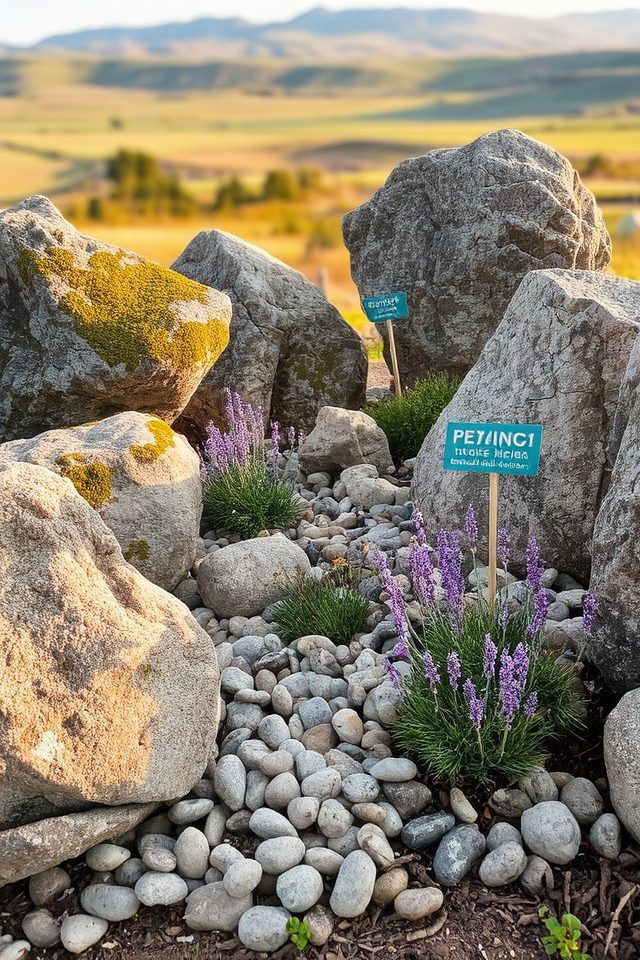
In windy areas, incorporating decorative boulders or rocks into your garden design can provide both aesthetic appeal and practical benefits. These natural elements create visual interest and can serve as windbreaks, helping to shield more delicate plants from harsh gusts. Select larger boulders to complement your landscape while ensuring they are securely positioned. Additionally, arrange smaller rocks or pebbles around plants to anchor them in place and add texture, creating a harmonious and resilient outdoor space.
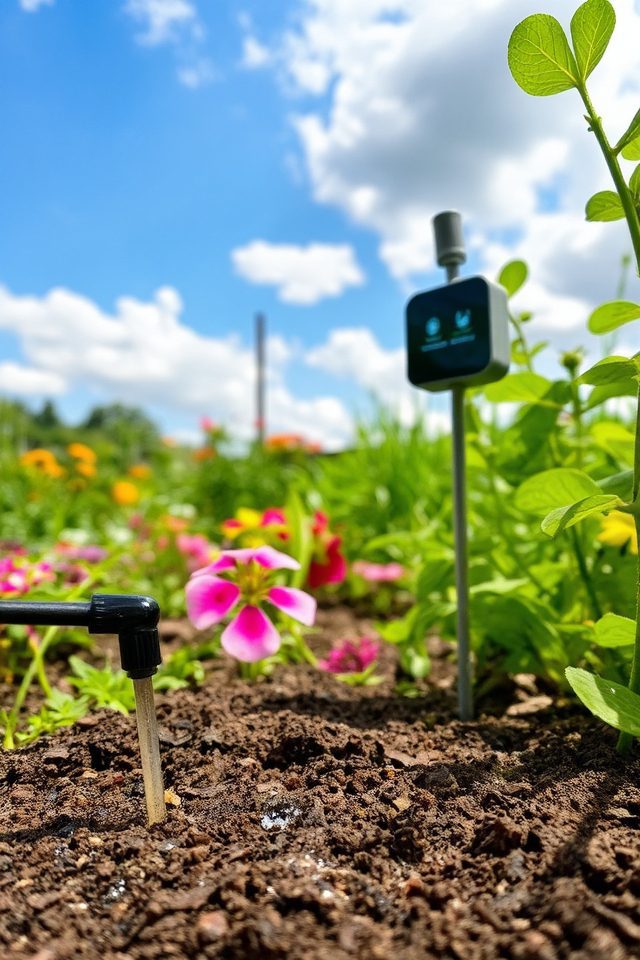
Implementing smart irrigation systems in windy areas is essential for effective water management and plant health. These systems utilize technology to optimize water delivery, reducing wastage caused by evaporation and runoff. Sensors can monitor soil moisture levels and weather conditions, ensuring that plants receive the right amount of water at the right time. By adapting irrigation schedules based on real-time data, gardeners can maintain lush landscapes while conserving water, even in challenging windy environments.
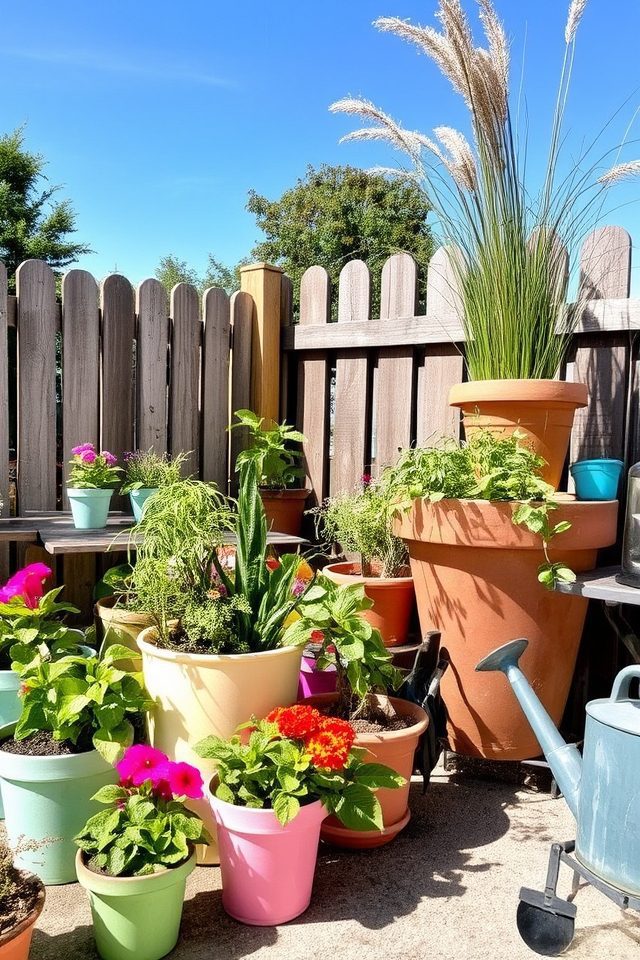
Using containers in windy areas offers gardeners flexibility and adaptability. Lightweight pots can be easily moved to more sheltered locations as needed, protecting delicate plants from harsh wind conditions. Additionally, choosing sturdy containers filled with heavy soil or adding rocks at the bottom can help prevent them from being toppled over. Container gardening also allows for a diverse range of plants, enabling creative combinations that can flourish despite challenging weather.
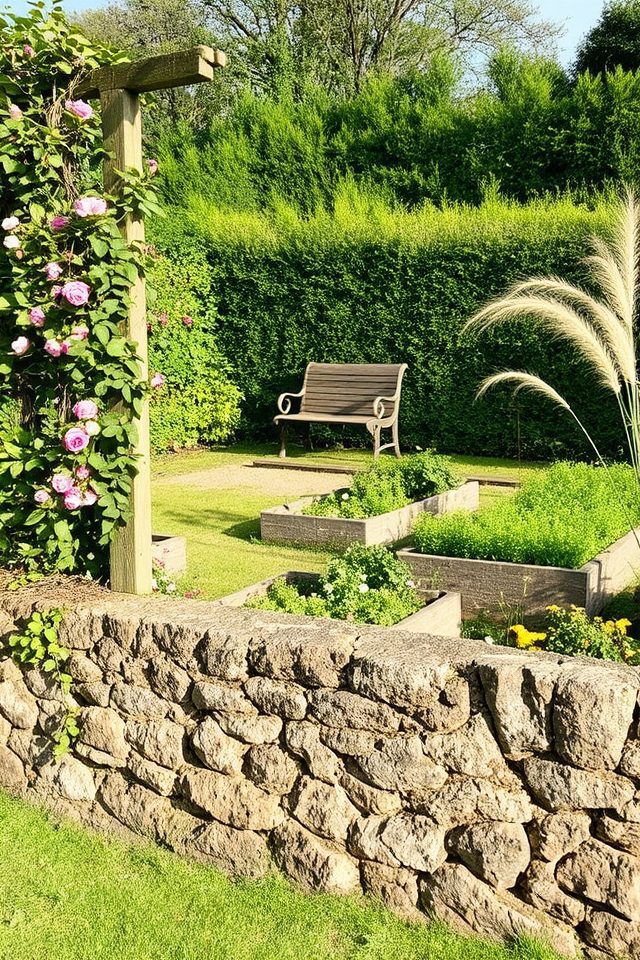
Creating microclimates with structures is an effective way to protect your garden in windy areas. By installing fences, trellises, or windbreaks, you can shield plants from harsh winds, allowing them to thrive. Consider using solid structures like stone walls or dense hedges for maximum protection. Additionally, strategically placing outdoor furniture or raised beds can help create sheltered spots, enhancing the overall conditions for gardening. These small adjustments can considerably improve plant growth and resilience in blustery environments.
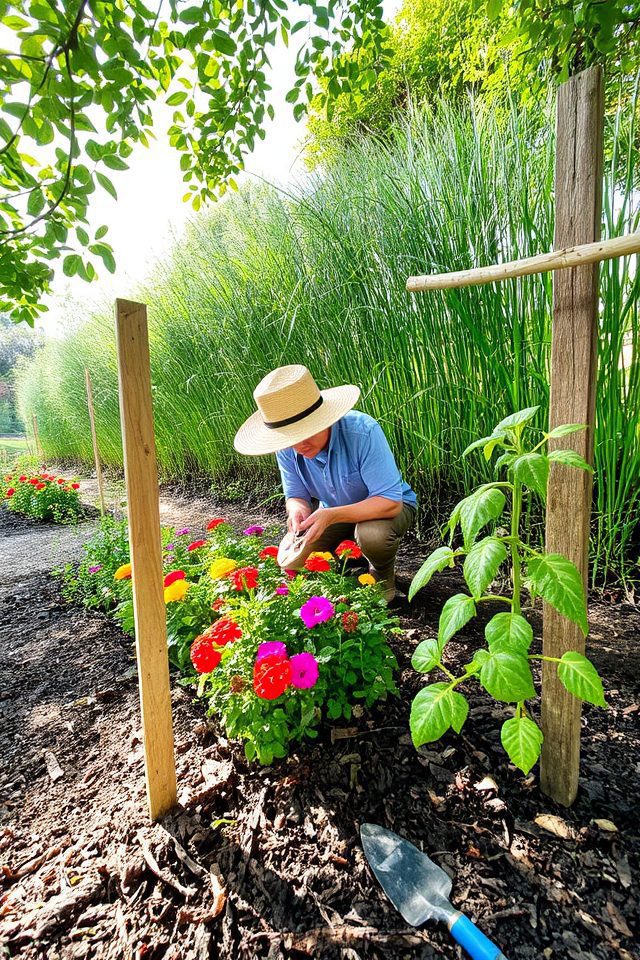
Maintaining regular garden maintenance is essential in windy areas to guarantee your plants thrive despite challenging conditions. Frequent tasks such as pruning, staking, and providing windbreaks can help protect delicate flowers and vegetables from wind damage. Regularly checking for loose soil and reinforcing plant roots can enhance stability. Additionally, keeping your garden tidy by removing debris helps minimize wind resistance, allowing plants to grow healthier and more robust against the elements.
As you cultivate your garden in windy areas, remember that resilience is key, like a steadfast tree swaying but never breaking in the gusts. By choosing sturdy plants, building protective structures, and incorporating thoughtful design elements, you can create a thriving sanctuary that not only withstands the elements but also enchants the eye. Stay dedicated to regular maintenance and watch your garden flourish, proving that beauty and strength can coexist harmoniously in even the most challenging conditions.
